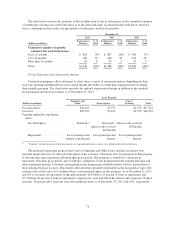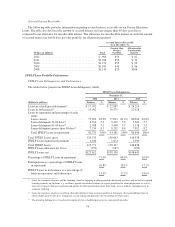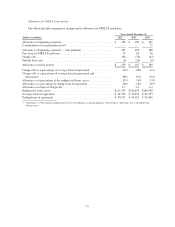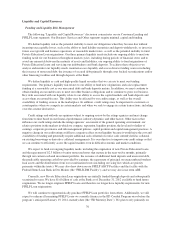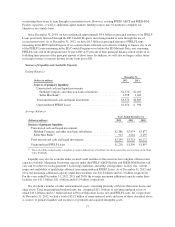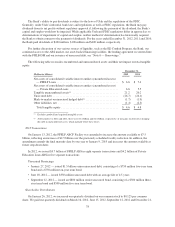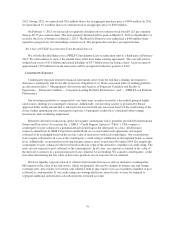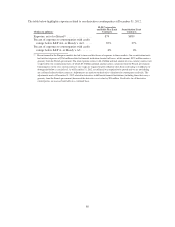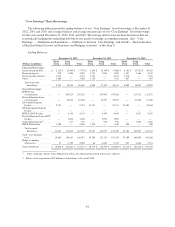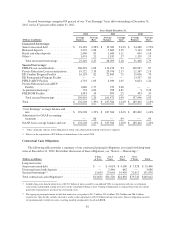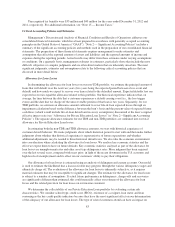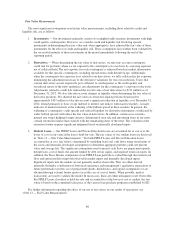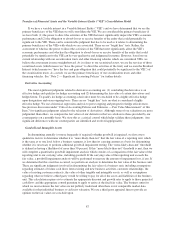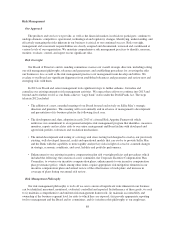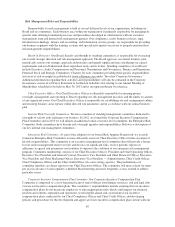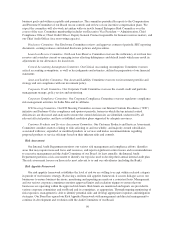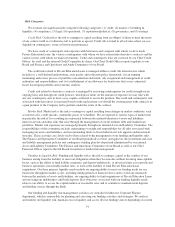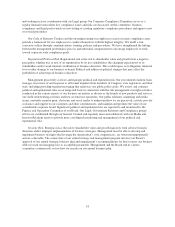Sallie Mae 2012 Annual Report Download - page 85
Download and view the complete annual report
Please find page 85 of the 2012 Sallie Mae annual report below. You can navigate through the pages in the report by either clicking on the pages listed below, or by using the keyword search tool below to find specific information within the annual report.Unrecognized tax benefits were $33 million and $40 million for the years ended December 31, 2012 and
2011, respectively. For additional information, see “Note 15 — Income Taxes.”
Critical Accounting Policies and Estimates
Management’s Discussion and Analysis of Financial Condition and Results of Operations addresses our
consolidated financial statements, which have been prepared in accordance with generally accepted accounting
principles in the United States of America (“GAAP”). “Note 2 — Significant Accounting Policies” includes a
summary of the significant accounting policies and methods used in the preparation of our consolidated financial
statements. The preparation of these financial statements requires management to make estimates and
assumptions that affect the reported amounts of assets and liabilities and the reported amounts of income and
expenses during the reporting periods. Actual results may differ from these estimates under varying assumptions
or conditions. On a quarterly basis, management evaluates its estimates, particularly those that include the most
difficult, subjective or complex judgments and are often about matters that are inherently uncertain. The most
significant judgments, estimates and assumptions relate to the following critical accounting policies that are
discussed in more detail below.
Allowance for Loan Losses
In determining the allowance for loan losses on our non-TDR portfolio, we estimate the principal amount of
loans that will default over the next two years (two years being the expected period between a loss event and
default) and how much we expect to recover over time related to the defaulted amount. Expected defaults less our
expected recoveries equal the allowance related to this portfolio. Our historical experience indicates that, on
average, the time between the date that a customer experiences a default causing event (i.e., the loss trigger
event) and the date that we charge off the unrecoverable portion of that loan is two years. Separately, for our
TDR portfolio, we estimate an allowance amount sufficient to cover life-of-loan expected losses through an
impairment calculation based on the difference between the loan’s basis and the present value of expected future
cash flows (which would include life-of-loan default and recovery assumptions) discounted at the loan’s original
effective interest rate (see “Allowance for Private Education Loan Losses” in “Note 2—Significant Accounting
Policies”). The separate allowance estimates for our TDR and non-TDR portfolios are combined into our total
allowance for Private Education Loan losses.
In estimating both the non-TDR and TDR allowance amounts, we start with historical experience of
customer default behavior. We make judgments about which historical period to start with and then make further
judgments about whether that historical experience is representative of future expectations and whether
additional adjustments may be needed to those historical default rates. We also take the economic environment
into consideration when calculating the allowance for loan losses. We analyze key economic statistics and the
effect we expect them to have on future defaults. Key economic statistics analyzed as part of the allowance for
loan losses are unemployment rates and other asset type delinquency rates. More judgment has been required
over the last several years, compared with years prior, in light of the recent downturn in the U.S. economy and
high levels of unemployment and its effect on our customers’ ability to pay their obligations.
Our allowance for loan losses is estimated using an analysis of delinquent and current accounts. Our model
is used to estimate the likelihood that a loan receivable may progress through the various delinquency stages and
ultimately charge off. The evaluation of the allowance for loan losses is inherently subjective, as it requires
material estimates that may be susceptible to significant changes. The estimate for the allowance for loan losses
is subject to a number of assumptions. If actual future performance in delinquency, charge-offs and recoveries
are significantly different than estimated, this could materially affect our estimate of the allowance for loan
losses and the related provision for loan losses on our income statement.
We determine the collectability of our Private Education Loan portfolio by evaluating certain risk
characteristics. We consider school type, credit score (FICO), existence of a cosigner, loan status and loan
seasoning as the key credit quality indicators because they have the most significant effect on our determination
of the adequacy of our allowance for loan losses. The type of school customers attend can have an impact on
83


